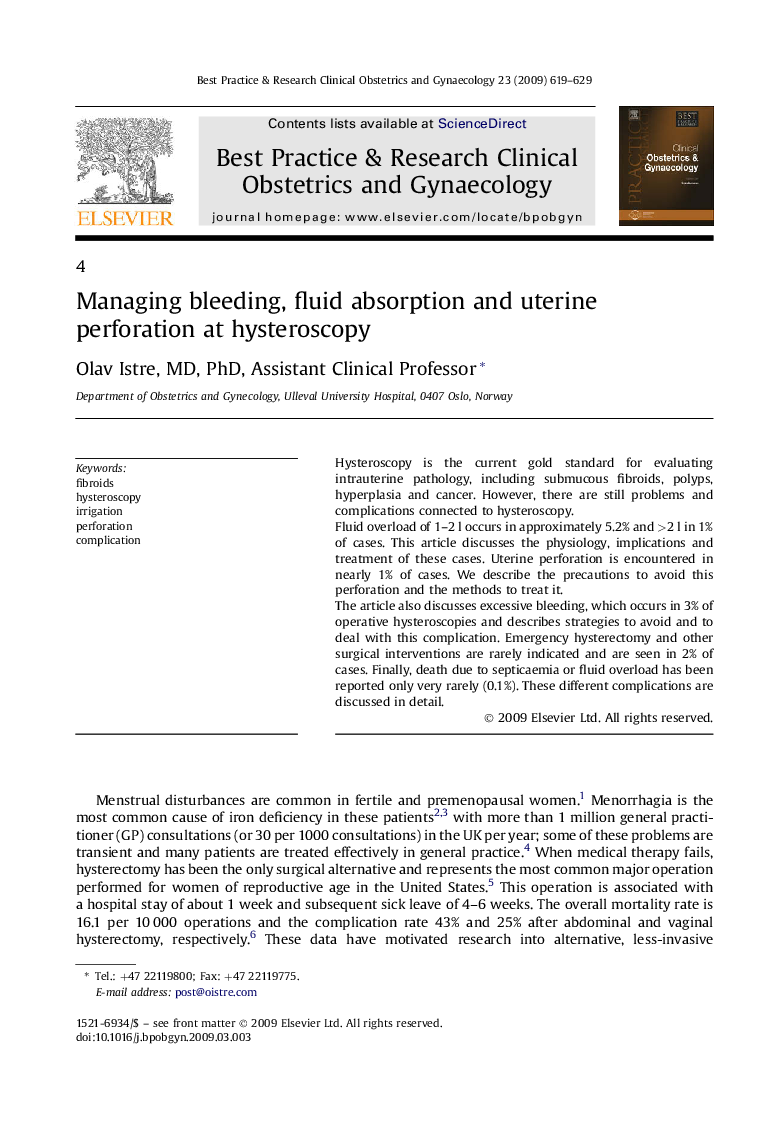| Article ID | Journal | Published Year | Pages | File Type |
|---|---|---|---|---|
| 3907955 | Best Practice & Research Clinical Obstetrics & Gynaecology | 2009 | 11 Pages |
Hysteroscopy is the current gold standard for evaluating intrauterine pathology, including submucous fibroids, polyps, hyperplasia and cancer. However, there are still problems and complications connected to hysteroscopy.Fluid overload of 1–2 l occurs in approximately 5.2% and >2 l in 1% of cases. This article discusses the physiology, implications and treatment of these cases. Uterine perforation is encountered in nearly 1% of cases. We describe the precautions to avoid this perforation and the methods to treat it.The article also discusses excessive bleeding, which occurs in 3% of operative hysteroscopies and describes strategies to avoid and to deal with this complication. Emergency hysterectomy and other surgical interventions are rarely indicated and are seen in 2% of cases. Finally, death due to septicaemia or fluid overload has been reported only very rarely (0.1%). These different complications are discussed in detail.
